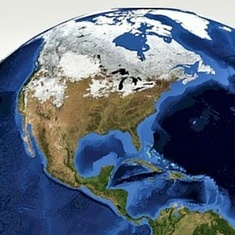
Capital City Origins ~ North America Part 1
First published: Thursday December 23rd, 2021
Report this blog
- Introduction.
- Port of Spain. Trinidad and Tobago.
- St. George's. Grenada.
- Kingstown. Saint Vincent and the Grenadines.
- Bridgetown. Barbados.
- Castries. Saint Lucia.
- Roseau. Dominica.
- St. John's. Antigua and Barbuda.
- Basseterre. Saint Kitts and Nevis.
- Santo Domingo. Dominican Republic.
- Port-au-Prince. Haiti.
- Kingston. Jamaica.
- Havana. Cuba.
- Nassau. Bahamas.
- Summary.
Introduction.
Well, we've arrived. Our last continent and second to last blog in the series. There are 13 entries in this section, all of them island nations. They are all in and around the Caribbean Sea, the natural habitat of the cruise ships and former stomping grounds of many pirates. The area's rich history is well known and many films have been made about it. Incidently, with reference to our etymology theme, the Caribbean was named after the Caribs, a people that were present in the area at the time of the Spanish conquest of the Americas.
We start our journey just off the coast of Venezuela in the island group of Trinidad and Tobago, before heading around the volcanic ridge towards Cuba and the Bahamas.
There are also many Overseas Territories in the Area. France, the Netherlands, the UK and the US are all represented. But these are reserved for a future blog series I am planning. Watch this space.
So, in the words of Captain Jack Sparrow, "Not all treasure is silver and gold, mate", here are some treasures of the Caribbean and of North America......
Port of Spain. Trinidad and Tobago.
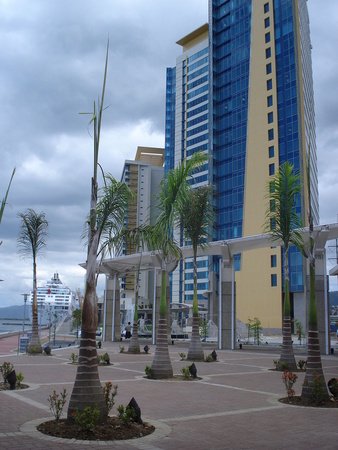
Early Spanish settlers founded the city on the site of a Amerindian fishing village called Cumucurapo meaning "place of silk cotton trees". A much better name that Port of Spain in my humble opinion, but then what do I know?
Originally called Puerto de los Espanoles and then later changed to Puerto de Espana, now obviously Port of Spain. The origin of this city is self-explanatory in that it means Spanish Port.
PORT OF SPAIN = SPANISH PORT
St. George's. Grenada.
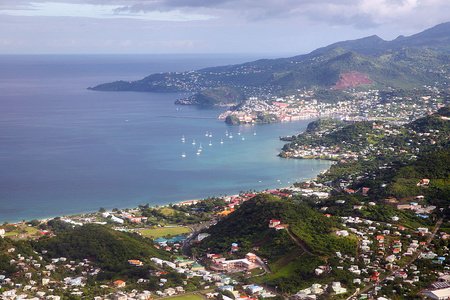
The city was founded by the French in 1650 after the governor of Martinique invaded and almost wiped out the native population. Many spices are grown on the surrounding island and this makes up the nation's chief exports.
Originally named Port Louis by France after King Louis IX, the British recieved the island of Grenada in 1763 as part of the Treaty of Paris, and changed the name to St. Georges. Named after the patron saint of England.
ST. GEORGES = named after ST. GEORGE patron saint of England.
Kingstown. Saint Vincent and the Grenadines.
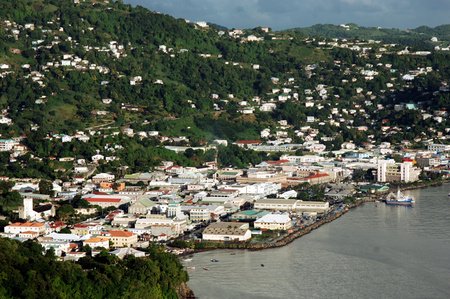
The city was founded by French settlers after the island's discovery by Christopher Columbus. He named the island St. Vincent after St. Vincent of Saragossa, whose feast day was the day of the sighting in 1498. More recently, Pirates of the Caribbean (1,2,and 3) were filmed in the area.
Kingstown was named after a King, although I'm not sure which one. Nearby Fort Charlotte, a British colonial structure, was named after the wife of King George III, so presumably that is the one. Again, I've emailed the Dept. of Tourism in St. Vincent for clarification. Once again, we wait.
KINGSTOWN = TOWN OF THE KING (Obviously)
Bridgetown. Barbados.
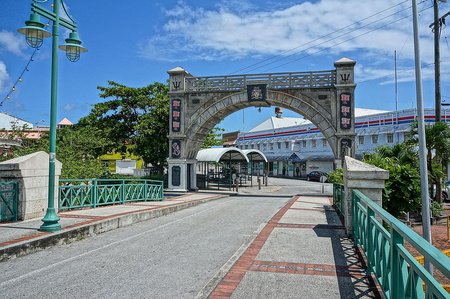
When the British arrived in 1628, the island was deserted. The main evidence of previous inhabitation was a bridge over a swamp. The area started to be called Indian Bridge by the settlers. In 1654 when a new bridge was constructed the area began to be known as The Town of Saint Michael but this was eventually changed to Bridgetown.
Now you might be thinking that the town was so named because of the bridge. However this is wrong. Strangely the city was named after Sir Tobias Bridge, who served Oliver Cromwell during the English Civil War. It is thought that he died on the island.
BRIDGETOWN = TOWN OF TOBIAS BRIDGE
Castries. Saint Lucia.
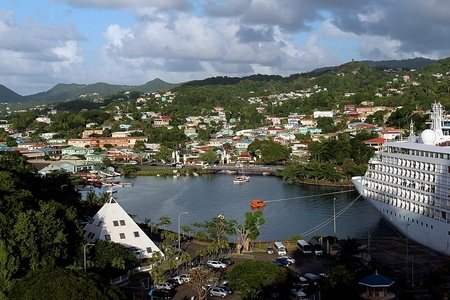
Built on a flood plain and on reclaimed land, Castries is the main port of entry for many cruise ships. The island of St.Lucia was purchased from the French West India Company in 1650 and the village of Carenage was founded soon after.
Carenage was renamed Castries in 1785 in honour of Charles Eugene Gabriel de la Croix, who as well as being the French Minister of the Navy and Colonies was also the Marquis of Castries, a small commune in Southern France.
CASTRIES = named after the Marquis of Castries.
Roseau. Dominica.
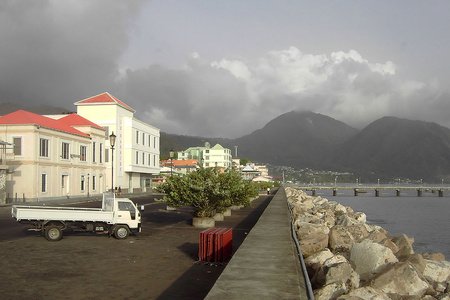
The city of Roseau sits on an accumulation of sediments deposited by the Roseau River over many millenia. Amerindians settled the area because of the river and it's fresh water.
With the arrival of European settlers in the 16th century, the French established a trading post and settlement and, in their traditional way, named it after what they found there. The river was surrounded by reed beds and so Roseau (the French word for reeds) was born.
ROSEAU = REEDS
St. John's. Antigua and Barbuda.
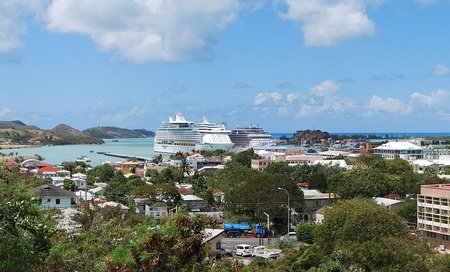
The settlement of St.John's has been the main town since Antigua was first colonized in 1632. It became the national capital following independence from the United Kingdom in 1981.
The city's name is rather self explanatory in that it is named after St. John. Although I haven't been able to find out which St. John. It may be John the Baptist or John the Evangelist or one of many others. Personally, I would have thought John the Baptist is the most likely.
ST. JOHN'S = named after Saint John.
Basseterre. Saint Kitts and Nevis.
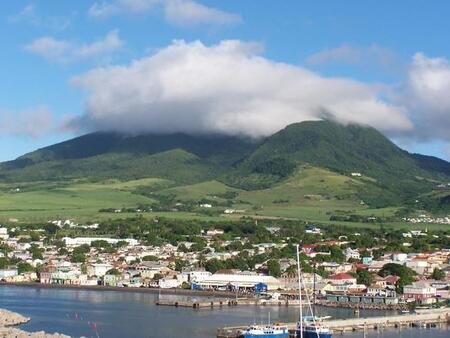
Being one of the oldest cities in the Caribbean, Basseterre has tons of history. Unfortunately most of it is bad. Following its foundation by the French in 1627 it has suffered from earthquakes, colonial wars, rioting, floods, fires and hurricanes. Despite all of this there are still some well preserved colonial buildings in the city.
Once again, the French named the city after what they saw on arrival. Basseterre translates as "Low Land".
BASSETERRE = LOW LAND
Santo Domingo. Dominican Republic.
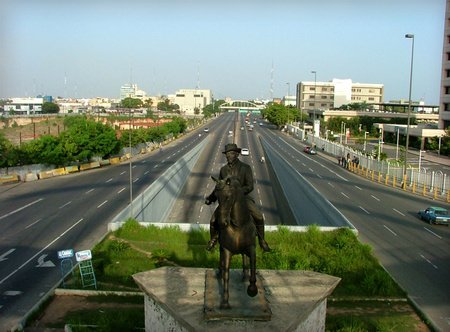
Founded in 1496, Santo Domingo is the oldest continously inhabited European settlement in the Americas. Originally called Santo Domingo de Guzman but eventually dropping the "de Guzman", the city was also briefly named Cuidad Trujillo when the republic's dictator Rafael Trujillo named it after himself in 1936. It reverted back to Santo Domingo after the assassination of Trujillo in 1961.
The city was named in honour of Saint Dominic of Guzman, born 1170, a Castillian Catholic priest and the founder of the Dominican Order. He is also the patron saint of astronomers.
SANTO DOMINGO = named after SAINT DOMINIC
Port-au-Prince. Haiti.

Our second capital city on the island of Hispaniola, that Haiti shares with the Dominican Republic, was founded under French rule in 1749. The area's population grew, turning the layout of the city into an amphitheatre design, with the central city district around the port, and residential areas in the surrounding hills.
The name Port-au-Prince translates to "Port of the Prince", although it is unclear which prince is being refered to. One theory is that it is named after a ship called Le Prince that arrived in the area in 1706, however the islets in the bay were called les ilets du prince prior to the ships arrival.
PORT-AU-PRINCE = PORT OF THE PRINCE
Kingston. Jamaica.
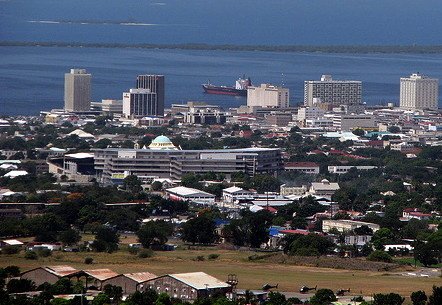
In the Americas, Kingston is the largest mainly English speaking city south of the United States. Kingston was founded in 1693 after an earthquake devastated the main village of Port Royal a year earlier. The town didn't grow until Port Royal was further destroyed by fire in 1703. The city was then planned on a grid system allowing trade and transport through the city connecting the agricultural lands to the port.
Kingston is a colloquial version of "King's Town", and judging by the date of incorporation, the city is named after King William III who was on the throne at that time.
KINGSTON = KING'S TOWN
Havana. Cuba.
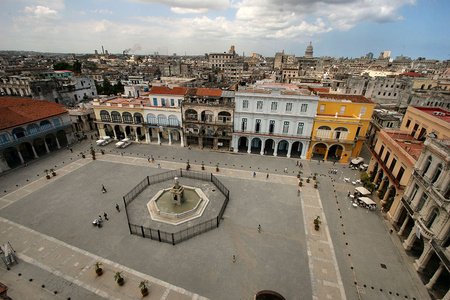
Havana began as a trading post that suffered attacks by pirates and buccaneers of many nations. These attacks convinced the Spanish to construct a fortress and garrison to protect their interests in the area. Havana was granted city status by King Philip of Spain in 1592.
The name Havana, or Habana as it is known locally, derives from the name of the local Taino chief that ruled the area prior to the arrival of the European settlers. His name was Habaguanex.
HAVANA = named after HABAGUANEX, a local chief.
Nassau. Bahamas.
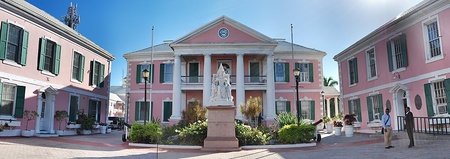
And so to our final city in the first part of the North America section. Nassau's growth began in the late 18th century with a large influx of Loyalists and their slaves following the American War of Independence. After the British abolished the slave trade in 1807, many former slaves were resettled in the Bahamas after being liberated from the slave ships.
The city gets it's name from King William III of England. So, why wasn't it named Kings Town or something similar I hear you ask. Well, William was also a Dutch Prince, of Orange-Nassau as it happens. Hence the name.
NASSAU - named after William III, Prince of Orange - Nassau.
Summary.
So, there ya go. All the sovereign nations of the Caribbean. As I stated in the introduction, there are however many overseas territories in the region. The British and American Virgin Islands, Puerto Rico, and Montserrat to name a few, these I will be covering at a later date in a different series of blogs. Not till next year though, there's this little thing called Christmas on the horizon, so I may be distracted a little, sorry about that.
Anyways, onwards and upwards. Our next section, the last one in the series, all say "awww", takes us from Panama up to Canada along the Pan-American Highway I suppose, with a couple of short detours along the way.
There doesn't seem much point in describing the etymology of North America, suffice to say its the old "Amerigo Vespucci" story I told in the South America episode, just replace South with North. In the words of Aleksandr Orlov the meerkat.."Simples". Sorry for you non UK JetPunkers, Aleksandr was a character on a TV advertisement for a car insurance comparison site. Link to the Meerkats .
Right. Let's get going. Let's sail across the Caribbean and head for the Panama Canal and our first "mainland" capital. Panama City. I could buy a hat, i've always wanted a Panama Hat. In fact there is a restaurant in my county, about 8 or 9 miles away from my home, that is called Panama Hatty's. Don't believe me ? Go to their website , not sure if this is classed as advertising though. I have no connection with them, so probably not. Ah well, if I get into trouble with the Quizmaster, I'll rewrite this last bit. And yes I'm rambling on again. See you in Panama !

MERRY CHRISTMAS to those of you that celebrate it, and HAPPY HOLIDAYS to those that don't. I'm not here to judge, just to spread good will.
Interesting how Panama Hatty's appears to have no connection with Panama hats. I wonder what would happen if you were to go into there with a Panama hat haha